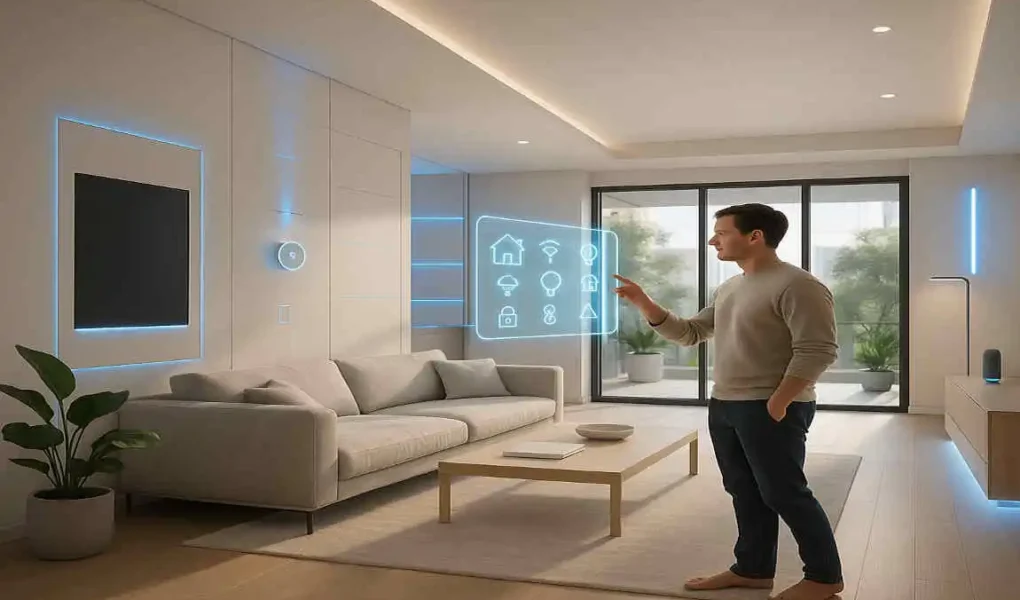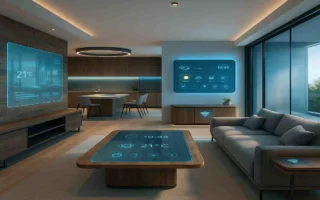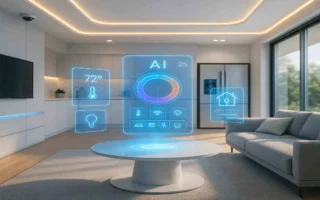In 2025, smart homes are no longer a futuristic concept but a reality that’s transforming how we live. If you’re wondering how to design smart homes that seamlessly integrate technology into your daily life, you’re in the right place.
Understanding Smart Homes in 2025
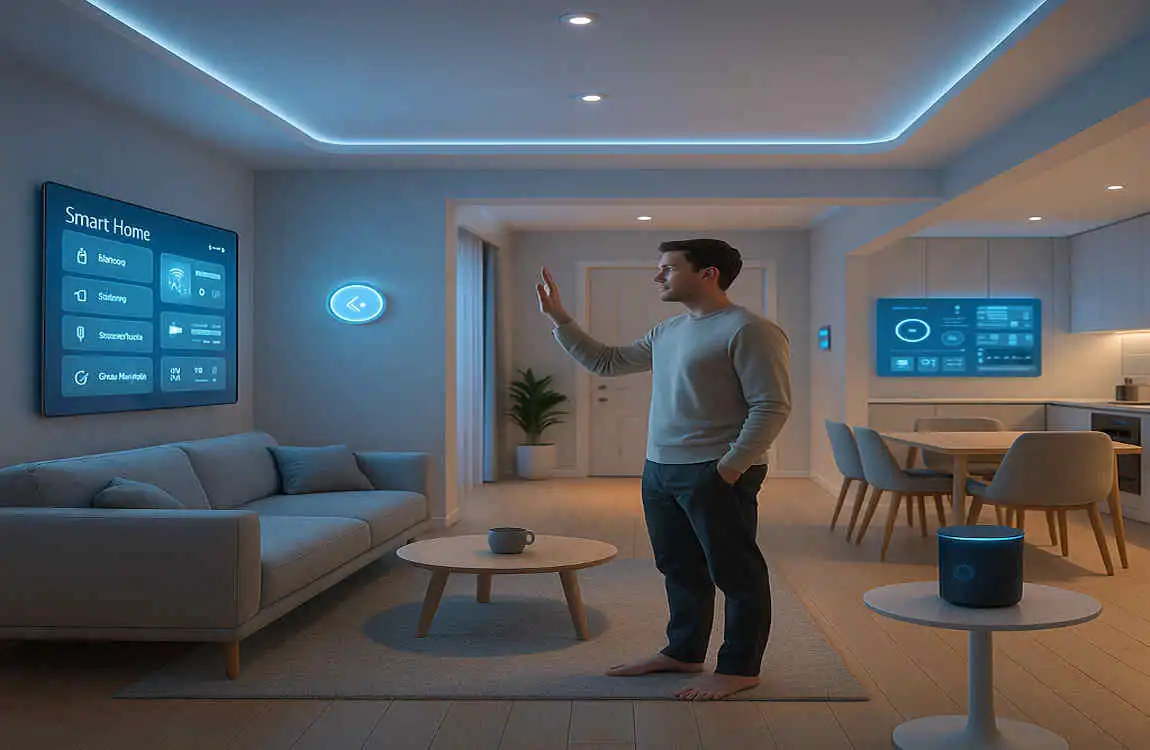
The Evolution of Smart Homes
Smart homes have come a long way since their inception. In the past, they were a luxury, often seen in sci-fi movies. Today, they’re becoming a standard in many households. And in the future? Smart homes will be even more integrated, intuitive, and personalized.
Key Technologies Shaping Smart Homes
Several technologies are at the forefront of smart home design in 2025:
- Artificial Intelligence (AI): AI is the brain behind smart homes, enabling them to learn and adapt to your preferences.
- Internet of Things (IoT): IoT connects all your devices, allowing them to communicate and work together seamlessly.
- 5G: With faster and more reliable internet, 5G enhances the performance of smart home devices.
- Voice Control: Voice assistants like Alexa and Google Home make controlling your smart home easier than ever.
Benefits of Smart Homes
Why should you consider designing a smart home? Here are some compelling reasons:
- Energy Efficiency: Smart homes can optimize energy usage, reducing your carbon footprint and utility bills.
- Convenience: Automate routine tasks and control your home with a simple voice command or tap on your smartphone.
- Security: Smart cameras, locks, and sensors keep your home safe, providing you with peace of mind.
- Comfort: From climate control to automated lighting, smart homes create a more comfortable living environment.
Planning Your Smart Home Design
Assessing Your Lifestyle and Needs
Before diving into smart home design, take a moment to assess your lifestyle and needs. What aspects of your daily routine could benefit from automation? Do you prioritize energy savings, security, or entertainment? Answering these questions will guide your design choices.
Setting a Realistic Budget
Smart home design can range from budget-friendly to high-end. Determine how much you’re willing to invest and prioritize the features that matter most to you. Remember, you can always start small and expand your smart home ecosystem over time.
Building New vs. Retrofitting
Are you building a new home or retrofitting an existing one? New construction allows for easier integration of smart home infrastructure, while retrofitting may require more planning and potentially higher costs. Consider your options carefully.
Importance of Infrastructure-Ready Homes
Whether building new or retrofitting, ensure your home is infrastructure-ready. This includes proper wiring, network setup, and consideration of future upgrades. A solid foundation will make your smart home design process smoother and more efficient.
Core Components of a Smart Home
Smart Hubs and Controllers
The smart hub is the brain of your smart home, coordinating and controlling all connected devices. Popular options include Amazon Echo, Google Nest Hub, and Samsung Smart Things Hub. Choose a hub that’s compatible with the devices you plan to use.
Wireless Connectivity
Wireless connectivity is crucial for a seamless smart home experience. Common protocols include:
- Wi-Fi: Ideal for devices that require high bandwidth, like streaming cameras.
- Zigbee: A low-power, mesh network protocol suitable for battery-powered devices.
- Z-Wave: Another low-power option, often used for home automation devices.
- Thread: A newer protocol designed for smart home applications, offering low power consumption and secure communication.
Essential Smart Devices
Some must-have smart devices for your home include:
- Smart Thermostats: Control Your Home’s Temperature and Save Energy.
- Smart Lights: Automate lighting for convenience and ambiance.
- Smart Locks: Enhance security and grant access remotely.
- Smart Cameras: Keep an eye on your home from anywhere.
- Smart Sensors: Detect motion, temperature, and more to trigger automation.
Voice Assistants
Voice assistants like Alexa, Google Assistant, and Apple HomeKit make controlling your smart home a breeze. Select the option that best integrates with your devices and aligns with your preferences.
Expert Tips for Designing Seamless Smart Homes
Prioritize Interoperability
When selecting smart home devices, prioritize interoperability. Ensure that the devices you choose can work together seamlessly, regardless of brand or protocol. This will create a more cohesive and user-friendly smart home experience.
Design for Ease of Use
Your smart home should be intuitive and easy to use. Create automation routines that simplify your daily life, and choose devices with user-friendly interfaces. Remember, the goal is to make your life easier, not more complicated.
Focus on Cybersecurity
With the rise of smart homes comes the need for robust cybersecurity. Protect your data and devices by using strong passwords, enabling two-factor authentication, and keeping your software up to date. Consider investing in a dedicated smart home security system for added peace of mind.
Incorporate Energy Management Systems
Sustainability is a key consideration in the house design of smart homes. Incorporate energy management systems that monitor and optimize your home’s energy usage. From smart thermostats to solar panels, there are many ways to make your smart home more eco-friendly.
Plan for Scalability
As technology evolves, so will your smart home needs. Plan for scalability by choosing devices and systems that can be easily upgraded or expanded. This will ensure your smart home remains relevant and functional for years to come.
Room-by-Room Smart Home Design Guide
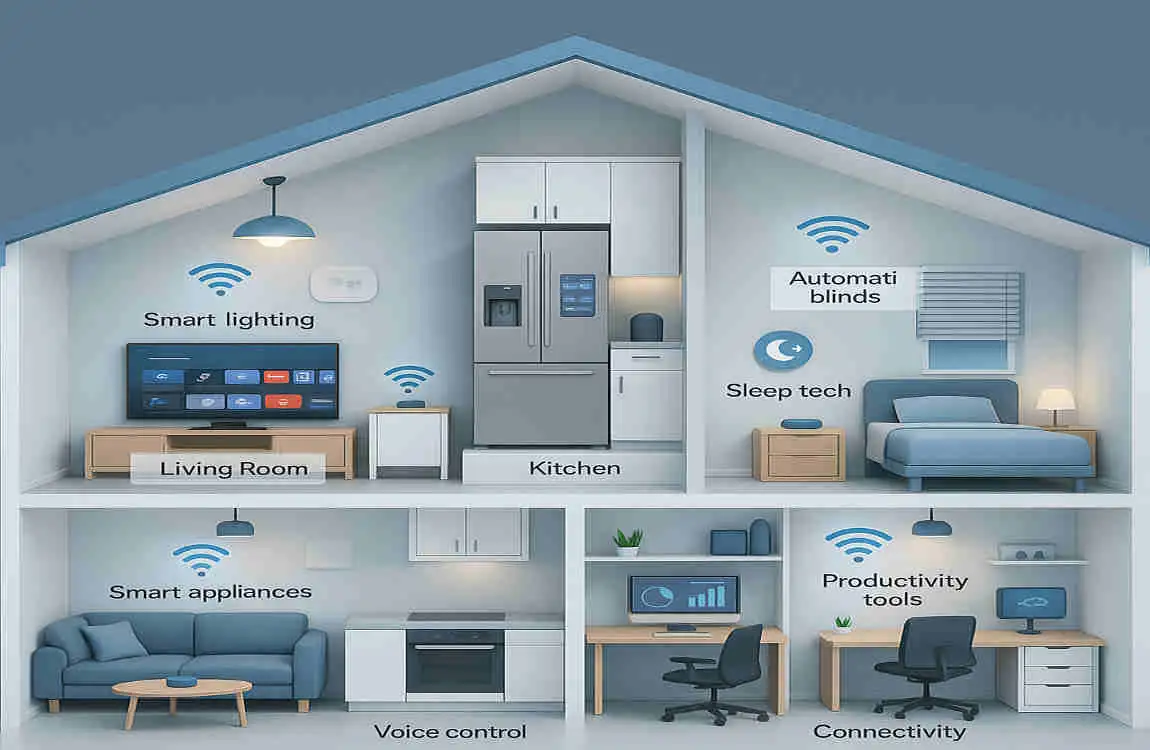
Smart Living Room
The living room is often the heart of the home, and smart technology can enhance its functionality and ambiance. Consider the following:
- Entertainment: Integrate smart TVs, sound systems, and streaming devices for a seamless entertainment experience.
- Lighting: Utilize smart lights to create distinct moods and automate lighting according to the time of day or activity.
- Privacy Controls: Install smart blinds or curtains that can be controlled remotely or set to open and close at specific times.
Smart Kitchen
The kitchen is another prime candidate for smart home integration. Here are some ideas:
- Smart Appliances: From refrigerators to ovens, smart appliances can simplify cooking and meal planning.
- Voice Control: Use voice assistants to set timers, check recipes, or even order groceries.
- Smart refrigerators can track your inventory, suggest recipes, and even create shopping lists for you.
Smart Bedrooms
Your bedroom should be a sanctuary, and smart technology can help create the perfect sleep environment:
- Sleep Trackers: Monitor your sleep patterns and adjust the room’s conditions to promote better rest.
- Automated Blinds: Wake up naturally with blinds that open at sunrise or close for an afternoon nap.
- Climate Control: Maintain the ideal sleeping temperature with a smart thermostat.
Smart Bathrooms
Even your bathroom can benefit from smart home design:
- Automated Showers: Set your preferred water temperature and flow with a smart shower system.
- Smart Mirrors: These can display the time, weather, or even your daily schedule.
- Water Usage Monitoring: Track your water consumption and detect leaks with smart sensors.
Outdoor Smart Spaces
Don’t forget about your outdoor areas:
- Security Cameras: Keep an eye on your property with smart cameras that can detect motion and send alerts to your device.
- Smart Irrigation: Automate your watering schedule and save water with a smart irrigation system.
- Lighting: Illuminate your outdoor spaces with smart lights that can be controlled remotely or set to turn on at dusk.
Integrating Automation and AI in Smart Homes
Role of AI in Smart Homes
AI is revolutionizing smart home design by enabling devices to learn from your habits and preferences. This leads to more personalized and efficient automation.
AI-Powered Smart Home Features
Some examples of AI-powered smart home features include:
- Predictive Routines: Your smart home can anticipate your needs and adjust accordingly, such as turning on lights when you arrive home.
- Adaptive Lighting: AI can analyze the time of day, weather conditions, and your activities to create the ideal lighting atmosphere.
- Energy Optimization: AI can optimize your home’s energy usage based on your patterns and local utility rates.
Creating Custom Automation Workflows
With the right smart home platform, you can create custom automation workflows tailored to your daily routine. For example, you could set up a “Good Morning” routine that opens the blinds, starts the coffee maker, and adjusts the thermostat to your preferred temperature.
Overcoming Common Challenges in Smart Home Design
Device Compatibility Issues
One of the biggest challenges in smart home design is ensuring device compatibility. To overcome this, research the devices you plan to use and choose a smart home platform that supports a wide range of products.
Connectivity and Signal Strength
Poor connectivity can hinder the performance of your smart home. Ensure your home’s Wi-Fi network is robust and consider using mesh systems or extenders to improve coverage. Also, be mindful of the wireless protocols used by your devices and their range limitations.
Privacy and Data Security
Smart homes collect a significant amount of data, making it crucial to prioritize both privacy and security. Use strong, unique passwords for each device, enable two-factor authentication when available, and regularly update the firmware on your devices. Consider investing in a dedicated smart home security system for added protection.
Managing Costs
Smart home design can be expensive, but there are ways to manage costs without compromising quality. Start with the essentials and gradually add more devices over time. Look for deals and discounts, and consider DIY installation to save on labor costs.
Future Trends in Smart Home Design for 2025 and Beyond
Biometric Security and Facial Recognition
As smart homes become more advanced, we can expect to see an increase in biometric security measures, such as facial recognition for access control. This will enhance security while providing a more seamless user experience.
Integration with Smart Cities
Smart homes of the future will be more integrated with smart city infrastructure. This could include features like automated waste management, energy sharing with neighbors, and even autonomous delivery of groceries and packages.
Advances in Energy Harvesting
Energy harvesting technologies, such as solar panels and kinetic energy capture, will play a larger role in smart home design. This will make smart homes more sustainable and energy-independent.
Personalized Smart Home Experiences
AI will continue to personalize smart home experiences, learning from your habits and preferences to create a truly customized living environment. From adjusting lighting and temperature to suggesting entertainment options, your smart home will become an extension of your lifestyle.

